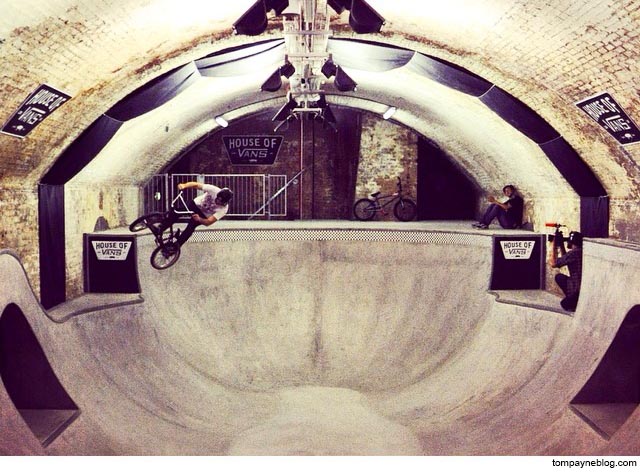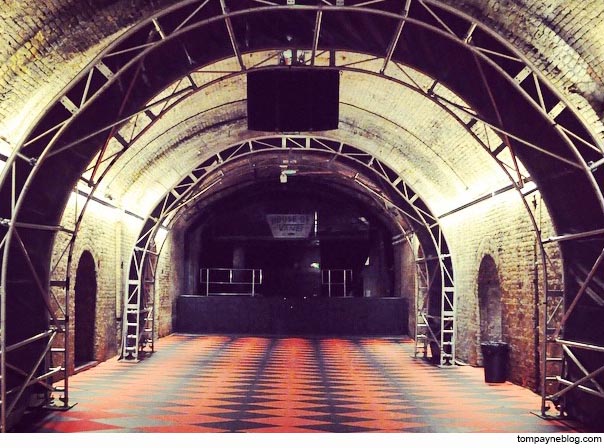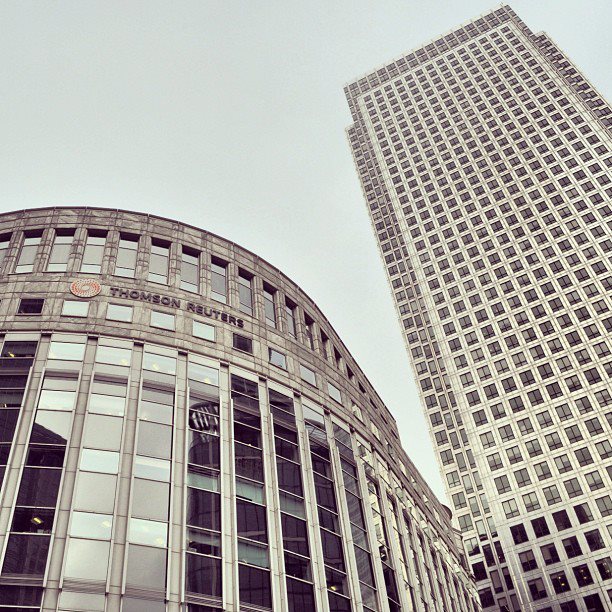This week we've heard the incredible news of the win for the Long Live Southbank campaign....
Read MoreLondon
I went to London's new Vans Skatepark tonight /
The Old Vic Tunnels underneath Waterloo Railway Station was - just a few years ago - nothing more than a few damp and derelict railway arches. In 2009 the space opened its doors as an arts and performance space and hosted dozens of amazing musicians, including the amazing Edward Sharpe and the Magnetic Zeros and saw the UK premiere of Banksy's Exit Through the Gift Shop.
After more than a year in disuse once again, the space reopened just a few weeks ago as House of Vans. Luckily enough, I was able to check out the new venue a few days after it opened. It's pretty amazing.
Nestled away in the Leake Street corner of the Station, the space comes complete with a street course, bowl section, a couple of bars, art space and music venue.
Once again, London has proved that innovative and creative thought to architecture and design can over come even the tightest physical limitations. When compared to the Vans parks spread across the United States, the London setup looks a little small. But through incredible layout technique, the creators of this venue have somehow managed to create what is a probably a far more interesting and active space than any large warehouse could offer. The coolest part is that it sits just a few metres underneath a a major railway line in the midst of one of the most amazing city centres in the world.
Perfect for an afternoon skate, Friday night party...or both. Check it out.
Feature image courtesy Domus. Images above by Tom Oliver Payne.
Meet Gary and Prince of Shoreditch, London /
This is Gary and his dog, Prince. Gary is one of hundreds of people who will sleep on the streets of London each night this winter. If he makes enough money in a day, he may sleep in the local Shoreditch shelter.
Read MorePolicy mobilities, planning cultures and Cycle Superhighways /
I recently had the opportunity to complete a dissertation on a topic of my choice. As expected, I decided to research bikes in the city...
Beginning the dissertation I envisioned undertaking a fairly straightforward analysis of how London has attempted to copy Copenhagen’s Cycle Superhighways (CSH). As with most research, it wasn’t long before I realised that the delivery of each of these policies wasn’t as straightforward as it first seemed.
While London and Copenhagen’s motivations for implementing CSH remained generally the same, their designs could hardly be more distinct. London’s blue splats of paint are hardly the safe and coherent, segregated cycle paths that stretch into and out of Copenhagen’s centre.
In reality, London has made no effort to actually ‘copy’ Copenhagen’s CSH network: it has merely copied the name.
While cycling around Copenhagen in the glorious summer months conducting an urban design analysis and interviews with planning professionals, I was faced with the complex question: how can London improve its cycling culture to become more like that of Copenhagen?
The answer is essentially quite simple: build it and they will come. But why has this been so difficult in London? Why does every cycle scheme ignore the need to build infrastructure that separates bikes and cars?
It wasn’t long before I was exploring the histories of both cities, making links between past events and contemporary transport planning culture.
On the one hand, Copenhagen has decades of experience in implementing segregated bike lanes (although it wasn’t always this way). On the other hand, London has a long history of implementing lousy, ad-hoc cycling schemes, which in a sense, continually try to please everybody, without actually pleasing anybody. This continues because of the status-quo mentality that runs deep within bodies like Transport for London.
How can London get out of this rut? With such a democratic approach to planning, how can it begin to finally close the ‘cycling credibility gap’ (relationship between acceptance of cycling culture and the level of infrastructure) - as I've termed it – without already having critical mass?
As a final recommendation, I’ve argued that London (ie. Boris) must finally begin to deliver sections of high quality cycling infrastructure. By communicating the benefits of fully segregated cycle paths, he can finally gain the momentum to persuade the lobby groups, institutions and various road users that this is exactly the long-term infrastructure London needs to become the cycling city it envisions itself to become.
Check out the full dissertation here: Policy mobilities, planning cultures and Cycle Superhighways (note: names of interviewees have been removed for privacy).
Camden, Hackney: good, but let's see better /
Riding home a few nights ago, I hit a section of segregated cycle path along Royal College Street in Camden Town. I was pretty impressed.
Read MoreA few photographs from up The Shard /
I went up The Shard yesterday, and it was awesome. Here are some of my photos.
Read MoreAre our greatest cities destroying their greatest assets? /
Around the world, city authorities are developing unstructured creative spaces into more lucrative commercial or residential zones – but the ability to generate more income from these areas comes at a cultural cost.
Read MoreSouthbank & 5 Pointz set for demolition /
Two weeks ago one of the world's most iconic cultural locations was listed for destruction. This week, after years of opposition, another iconic site also moves dangerously close to demolition.
Read MoreI just rode down to Canary Wharf, London. It wasn't that bad. /
Located in the Isle of Dogs, Canary Wharf is now one of the largest financial centres in the world. Following years of political debate and local opposition, the initial masterplan was approved in the early 1990s, and a series of development stages have followed, creating a total of 400,000 m2 floor space.
The site has been highly criticised on a number of fronts; sterility, lacking cohesion with London and having been developed with too much public investment from the public sector.
But is it still too soon to judge?
Like most master plans, Canary Wharf has had teething issues (it isn't exactly the most people-friendly environment). But given the current economic climate, hind-site may shine a more positive light on the place that has given office space in London a place to breathe.
And besides all of that, I thought the tall towers looked pretty cool, so I took some photos!...


















